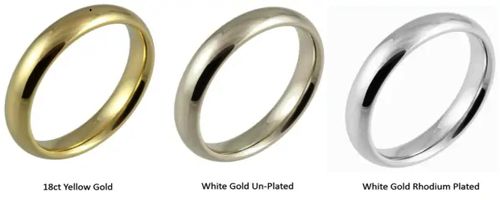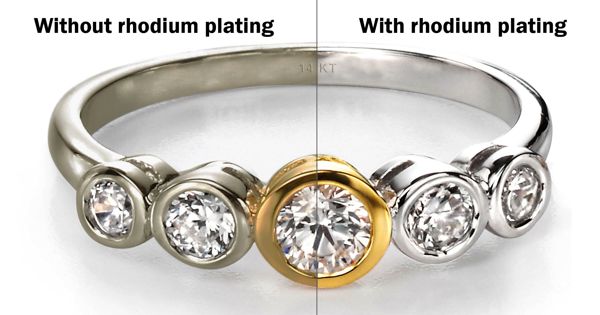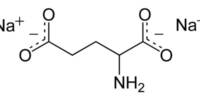Rhodium plating is occasionally used on white gold, silver, or copper and its alloys. It is a process that gives the white gold its ultra white color by placing a coating over the existing metal. It is also known as rhodium dip or rhodium flashing, is used to increase the durability, luster, and light reflection of a piece of jewelry. It is mainly used on silver-hued metals, such as white gold, palladium, or silver.
Because it is a hard metal, a rhodium-plated piece of jewelry will be more scratch-resistant. A barrier layer of nickel is usually deposited on silver first, though in this case, it is not to prevent migration of silver through rhodium, to prevent contamination of the rhodium bath with silver and copper, which slightly dissolve in the sulfuric acid usually present in the bath composition. It is most commonly found on white gold jewelry but can also be used on silver and other materials.

Rhodium is a precious metal that is in the family of platinum. For rhodium plated jewelry, it involves plating the jewelry with a surface that guards against scratches that also give a reflective white appearance. Rhodium is plated using an electroplating process. For a piece of jewelry to be plated, it must first be thoroughly cleaned to remove all contaminants. If there is any dirt on the piece, the plating will not hold. It depends on the piece of jewelry and how much friction it gets. For earrings and necklaces, the rhodium plating may never wear off.
Rhodium plating can also be referred to as rhodium flashing or rhodium dip. Rhodium plating is used to enhance the luster and durability of metals such as silver and white gold and gives a smooth, shiny finish to the jewelry. There are many upsides to rhodium-plated jewelry. First, it increases shine, luster, and durability. It is especially attractive when used for diamond rings, as it can really enhance the brilliance of the diamond. Most rhodium plating has a thickness of .75 to 1.0 microns.
However, Rhodium plating has been controversial due to the lack of knowledge about what it is exactly and its purpose. One of the biggest upsides to rhodium plating is it’s nickel free, making it hypoallergenic. Most white jewelry consists of yellow gold mixed with a small amount of nickel to give it the “white gold” color. Nickel allergy is increasing across the population, so it makes sense to choose your metals wisely.
Information Source:
















